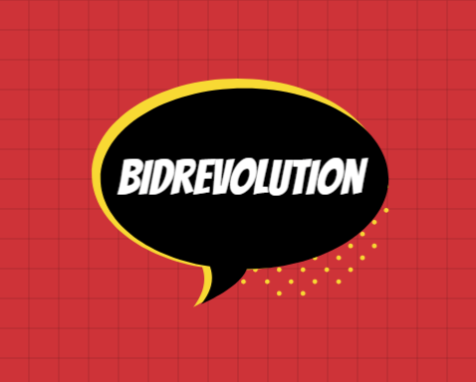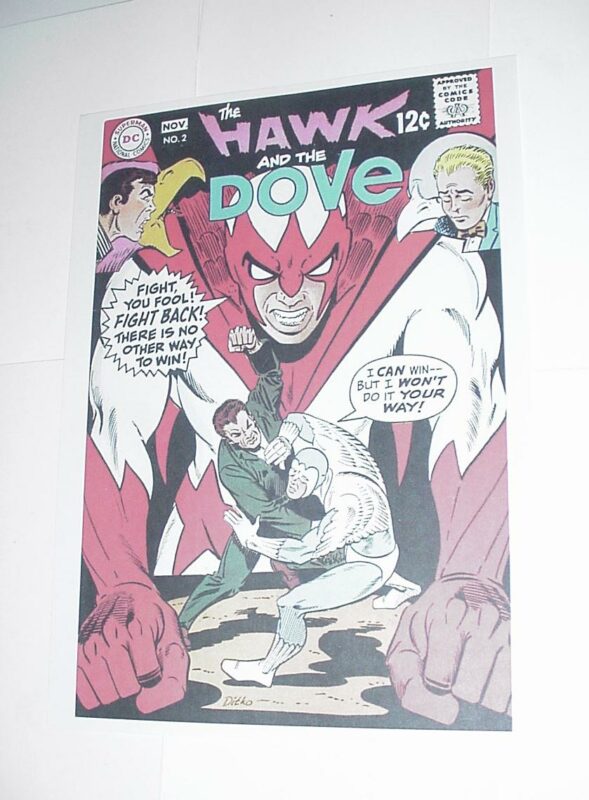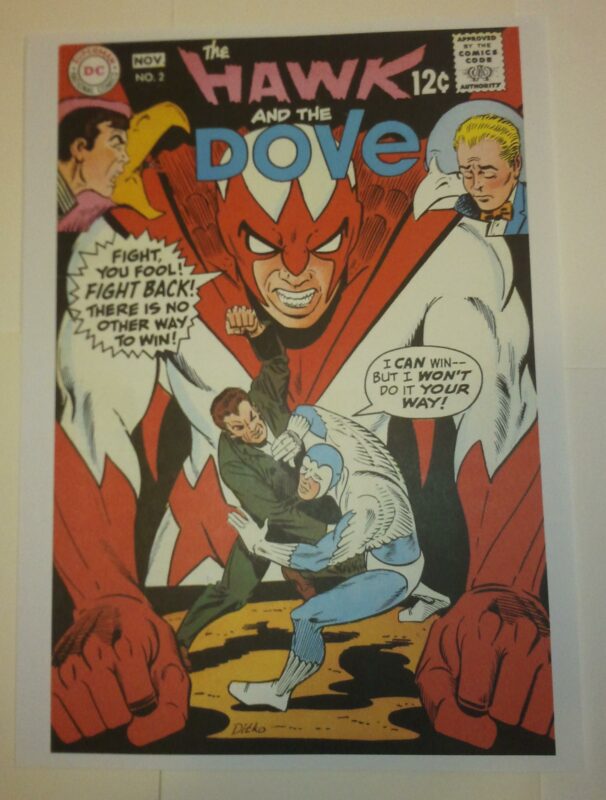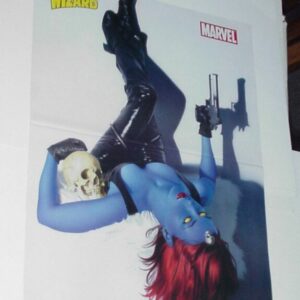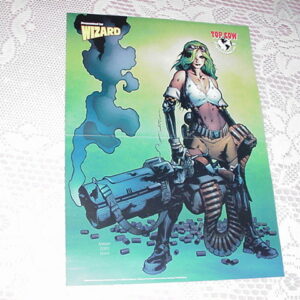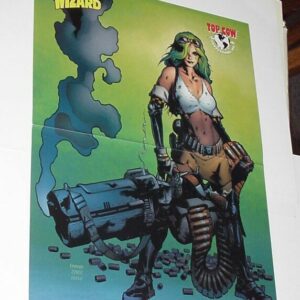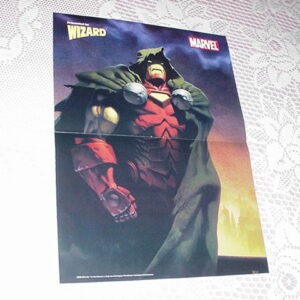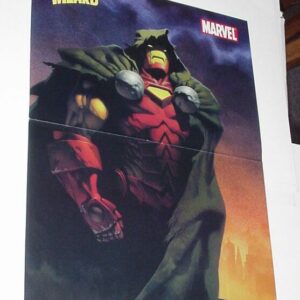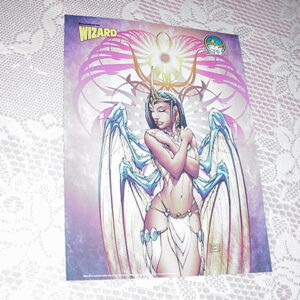Description
Hawk and Dove are fictional characters and a superhero team that appear in comic books published by DC Comics. Created by Steve Ditko and Steve Skeates and first debuting in Showcase No. 75 (June 1968) during the Silver Age of Comic Books, the duo has existed in multiple incarnations over the years across several eponymous ongoing series and mini-series, and has also appeared in a number of recurring roles and guest-appearances in titles such as Teen Titans, Birds of Prey, and Brightest Day. The most prominent incarnations have been the original pairing of teenage brothers, the temperamental and militant Hank Hall (Hawk I) with the well-read and pacifistic Don Hall (Dove I), as well as the current teaming of Hank Hall with Dawn Granger (Dove II), an unrelated young woman who assumes the role of Dove in Hawk and Dove (vol. 2) No. 1 (October 1988) following Don’s death in 1985’s Crisis on Infinite Earths maxi-series. The central concept which was originally inspired by the emerging political divides of the 1960s (see war hawks and war doves) traditionally revolves around two young heroes with contrasting personalities and diametrically opposed ideologies who, by speaking their super-heroic aliases, are transformed and gifted with power sets of heightened strength, speed, and agility. With Dove representing reason and nonviolence and Hawk representing force and aggression, they complement one another and find a state of balance in order to effectively combat evil. With Dawn’s introduction, it was revealed that Hawk and Dove receive their powers from the Lords of Chaos and Order, respectively, and that their powers are mystic in origin. Spinning off from their Showcase debut, Don and Hank Hall received their own series titled The Hawk and the Dove. Created by Steve Ditko and Steve Skeates, Ditko plotted only the first issue and left after the second. In a 1999 interview, Skeates expressed dismay with changes that would be made to his script by Ditko and editorial, citing a tendency to neutralize Dove’s abilities as a crimefighter in favor of Hawk’s: “It was strange. A lot of changes would happen after I turned in a script. Quite often, my idea of what to do with the Dove was have him do brave stuff – and then it would be changed by either Dick [Giordano] or Steve into the Hawk doing that stuff. They’d say it was out of character for the Dove. They seemed to be equating Dove with wimp, wuss, coward or whatever. And I don’t really think it was because they were more hawkish. I just don’t think that they knew what a dove was.” Hank Hall and Don Hall were the sons of Judge Irwin Hall. They eventually found out that their father had many enemies when their father was nearly assassinated. Hank and Don eventually follow the criminal back to the hideout where they accidentally locked themselves in the closet of some criminals plotting to dispose of him. Just as Hank and Don who found for the first time they could agree that they wanted to save their father, mysterious voices echoed throughout the room offering the boys a chance to save their father. All they had to do was call upon the powers of the Hawk and the Dove. The voices belonged to a Lord of Chaos named T’Charr and a Lord of Order named Terataya (even though the Lords of Chaos and Order were eternal enemies, these two Lords had fallen in love). The Hall brothers envoked their new powers and became Hawk and Dove. The conservative Hawk (Hank) was hot-headed and reactionary, whereas the liberal Dove (Don) was more thoughtful and reasoned, but was prone to indecisiveness. Judge Irwin Hall, displayed a more balanced political beliefs, and firmly disapproved of vigilantism not knowing his sons were costumed adventurers and the fact that Hawk and Dove had saved him from his would-be assailants. Dove possesses an ability known as danger sense transformation. When in the presence of danger, whether to herself or others, Dawn Granger can call out the word “Dove” and transform into Dove. She does not need to be aware of danger, meaning she transforms if she says the word while unknowingly being in danger. However, the transformation requires actual danger, so if Dawn incorrectly believed that she was in danger (such as when Barter abducted her), she would be unable to transform into Dove. Hawk possesses the powers of a more powerful God Chaos. Danger Sense Transformation, claws, hyper vigilance, superhuman durability, light speed, super strength, and unlimited stamina. Stephen J. “Steve” Ditko (born November 2, 1927) is an American comic book artist and writer best known as the artist and co-creator, with Stan Lee, of the Marvel Comics heroes Spider-Man and Doctor Strange. Ditko studied under Batman artist Jerry Robinson at the Cartoonist and Illustrators School in New York City. He began his professional career in 1953, working in the studio of Joe Simon and Jack Kirby, beginning as an inker and coming under the influence of artist Mort Meskin. During this time, he then began his long association with Charlton Comics, where he did work in the genres of science fiction, horror, and mystery. He also co-created the superhero Captain Atom in 1960. During the 1950s, Ditko also drew for Atlas Comics, a forerunner of Marvel Comics. He went on to contribute much significant work to Marvel, including co-creating Spider-Man, who would become the company’s flagship character. Additionally, he created the supernatural hero Doctor Strange and made important contributions to the Hulk and Iron Man. In 1966, after being the exclusive artist on The Amazing Spider-Man and the “Doctor Strange” feature in Strange Tales, Ditko left Marvel for reasons never specified. Ditko continued to work for Charlton and also DC Comics, making major contributions, including a revamp of the long-running character Blue Beetle, and creating or co-creating the Question, the Creeper, Shade, the Changing Man, and Hawk and Dove. Ditko also began contributing to small independent publishers, where he created Mr. A, a hero reflecting the influence of Ayn Rand’s philosophy of Objectivism. Since the 1960s, Ditko has declined most interviews, stating that it is his work he offers readers, and not his personality. Ditko was inducted into the comics industry’s Jack Kirby Hall of Fame in 1990, and into the Will Eisner Award Hall of Fame in 1994. Ditko moved to DC Comics in 1968, where he created the Creeper in Showcase #73 (April 1968) with scripter Don Segall, under editor Murray Boltinoff. DC Comics writer and executive Paul Levitz observed that Ditko’s art on the Creeper stories made “them look unlike anything else being published by DC at the time.” Ditko’s stay at DC was short — he would work on all six issues of the Creeper’s own title, Beware the Creeper (June 1968 – April 1969), though leaving midway through the final one — and the reasons for his departure uncertain.
